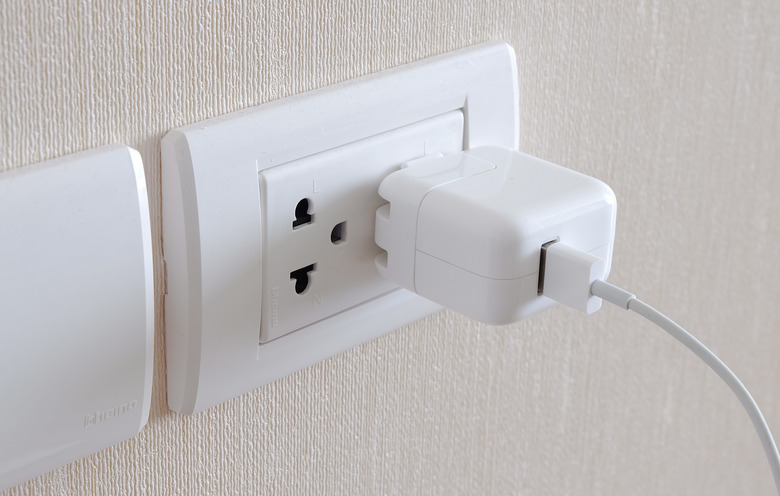How To Build A 120V AC To 12V DC Power Converter
Building a simple 12V direct current power supply makes a great project for newcomers to electronics. You can make it from a handful of inexpensive components and, when you're finished, use it to charge batteries, power circuits or run motors. The circuit consists of a transformer, a rectifier that converts alternating current to DC and a capacitor. Assembly of the power converter takes one to two hours.
1\. Locate the primary and secondary lugs on the transformer; they are usually on opposite sides of the device. Place the transformer on the perfboard such that the primary lugs hang over or are very near to the board's left-hand edge.
2\. Mount the transformer to the perfboard using the #6 screws, washers and nuts. The transformer has mounting holes in its metal frame. You may need to ream small holes in the board with the tip of a hobby knife blade or drill bit so it will accept the hardware.
3\. Solder the copper wire ends of the line cord to the transformer's primary lugs, one wire to each lug. When the lugs are cool, wrap them with electrical tape.
4\. Place the full-wave rectifier on the perfboard such that the two leads marked "~" line up closely with the transformer's secondary lugs. The "~" symbol indicates the rectifier's AC inputs; the two output leads are marked "+" and "-" for the DC positive and negative output. Solder the rectifier leads to the secondary lugs, one lead to each lug. If the transformer has three secondary lugs, ignore the middle one.
5\. Slip the leads of the capacitor through the holes in the perfboard so the capacitor's negative lead lines up closely with the rectifier's "-" lead. Solder the two negative leads together. Solder the positive capacitor lead to the positive lead on the rectifier. Clip excess lead wire, if needed, with the wire strippers.
6\. Cut two 12-inch pieces of 22-gauge connecting wire and strip 1/2 inch of insulation from both ends of each wire. Connect one end of one wire to the positive capacitor lead and solder it. Connect one end of the other wire to the negative capacitor lead and solder it. The 12V DC power converter is finished; you can connect the positive and negative output leads to a circuit or battery.
Things Needed
- Perfboard
- 12V transformer, 100 to 300 milliamps
- 2 #6 screws, washers and nuts
- Hobby knife
- AC line cord with standard 2-blade plug
- Soldering iron and electronics solder
- Electrical tape
- Full-wave rectifier, 1 amp
- 1,000 microfarad, 25V capacitor
- Wire strippers
- 22-gauge connecting wire
TL;DR (Too Long; Didn't Read)
The circuit described here is unregulated, meaning its voltage will drift slightly and there will be some electrical noise in the current. An unregulated supply is suitable for battery charging and to power electric motors; some sensitive audio circuits may require a slightly more complex regulated power supply that maintains 12V accurately.
If you cannot find a 25V capacitor, one with a higher voltage rating will work just as well. Do not use one rated for a lower voltage.
Warning
To avoid electrical shock and related hazards, double check your wiring before plugging the AC cord into an outlet.
Make sure the rectifier and capacitor are correctly connected — otherwise these components may suffer damage.
Cite This Article
MLA
Papiewski, John. "How To Build A 120V AC To 12V DC Power Converter" sciencing.com, https://www.sciencing.com/build-12v-dc-power-converter-7466576/. 13 March 2018.
APA
Papiewski, John. (2018, March 13). How To Build A 120V AC To 12V DC Power Converter. sciencing.com. Retrieved from https://www.sciencing.com/build-12v-dc-power-converter-7466576/
Chicago
Papiewski, John. How To Build A 120V AC To 12V DC Power Converter last modified March 24, 2022. https://www.sciencing.com/build-12v-dc-power-converter-7466576/
